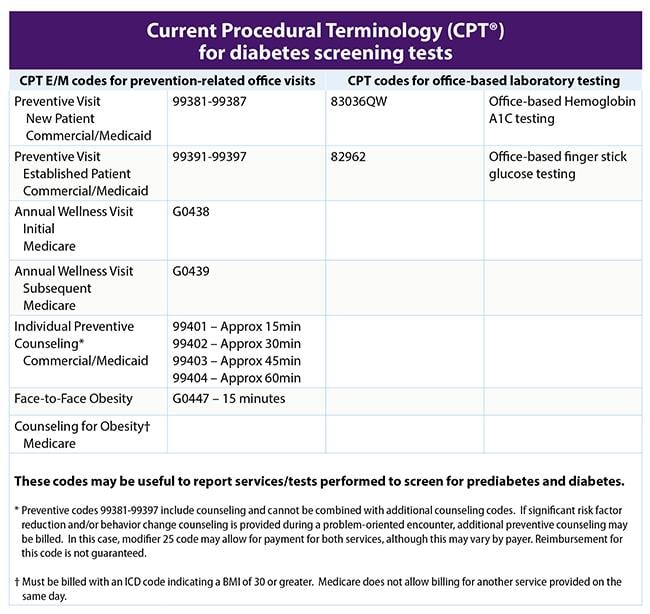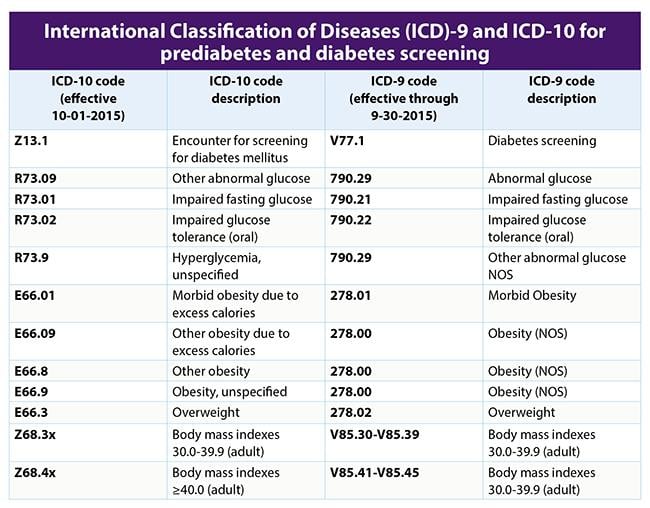Studies have shown that up to 30 percent of people with prediabetes will develop type 2 diabetes within five years. At a time when one in three U.S. adults has prediabetes, it’s important to identify which of your patients have this condition to help them get the interventions they need right away. Learn the ways to identify patients with prediabetes in your practice.
Two screening options, three tests
Prediabetes is a condition in which blood glucose or hemoglobin A1C (HbA1C) levels are higher than normal but not high enough to be classified as type 2 diabetes. There are two different approaches you can take to determine when patients have prediabetes: Identification at the point of care or via an electronic heath record (EHR) query that results in a listing or registry.
For point-of-care identification, use a simple algorithm to walk through the steps. The process starts with giving patients a diabetes risk assessment. If the patient is at risk and has a body mass index (BMI) of ≥24 kg/m2 (≥22 kg/m2, if Asian*) or a history of gestational diabetes, then you should use the results of a diagnostic test to determine whether the patient has normal blood sugar levels, prediabetes or diabetes.
There are three kinds of tests you can order: HbA1C, fasting plasma glucose or oral glucose tolerance test.

Experts recommend that you have patients complete the risk assessment before their visit and arrange for pre-visit lab testing so you can spend time talking with your patients about their results during the actual visit. (Tip: If you don’t routinely employ pre-visit planning, check out the AMA’s STEPS Forward™ module on pre-visit planning.)
If you choose to identify patients with prediabetes via a registry, you can do that by querying your EHR and setting up a prediabetes registry.
Patients with a BMI of ≥25 kg/m2 (≥23 kg/m2 for Asians) and blood glucose or HbA1C levels in the prediabetes range qualify for an evidence-based diabetes prevention program. View an algorithm that lists the inclusion and exclusion criteria for your EHR query.
When reporting the tests and diagnoses, refer to the charts below for the appropriate codes.
What to do following a diagnosis
An effective, evidence-based ways to reduce diabetes risk is to participate in a diabetes prevention program recognized by the CDC. Such programs emphasize healthy eating and increased physical activity, and they can reduce the risk of developing diabetes by more than one-half.
The AMA and the CDC jointly offer an easy way for care teams to access practical resources: Prevent Diabetes STAT: Screen, Test, Act—Today™. This initiative can help you and your team take three simple steps to improve the health of your patients:
- Screen patients for prediabetes using the CDC Prediabetes Screening Test or the American Diabetes Association (ADA) Diabetes Risk Test
- Test for prediabetes using one of three blood tests
- Act by referring patients with prediabetes to a nearby diabetes prevention program
The U.S. Department of Health and Human Services announced it soon will begin covering diabetes prevention programs for Medicare beneficiaries, making this lifestyle intervention accessible to even more people.
*These BMI levels reflect eligibility for the National Diabetes Prevention Program, as noted in the CDC Diabetes Prevention Recognition Program Standards and Operating Procedures. The ADA encourages screening for diabetes at a BMI of ≥23 kg/m2 for Asian Americans and ≥25 kg/m2 for non-Asian Americans, and some programs may use the ADA screening criteria for program eligibility. Please check with your diabetes prevention program provider for their specific BMI eligibility requirements.







